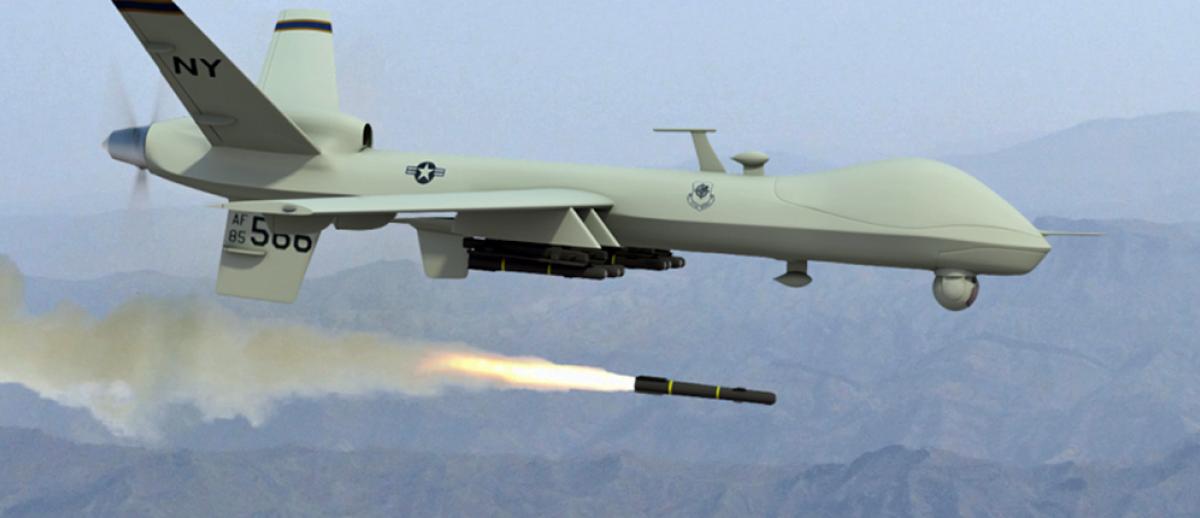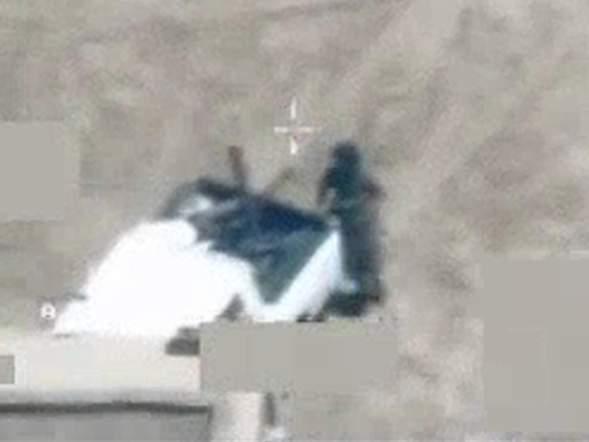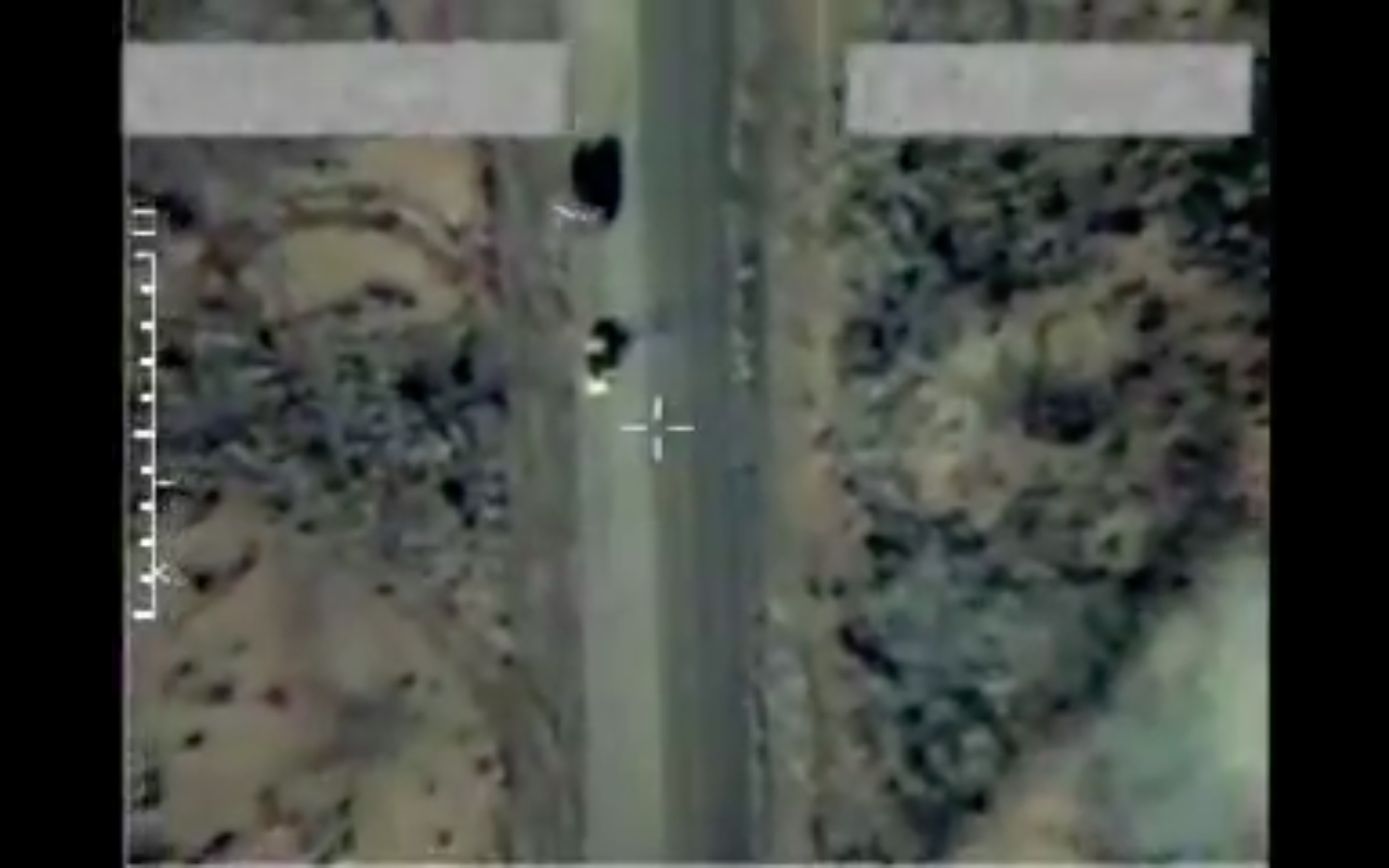What’s Wrong with “Signature Strikes”?
archive


What’s Wrong with “Signature Strikes”?
In January 2015, United States-born al-Qaeda propagandist Adam Gadahn and al-Qaeda leader Ahmad al Farouq, were killed along with two hostages, American Warren Weinstein and Italian Giovanni Lo Porto. What was unique about this strike was that the United States government was not entirely certain whom it was targeting when it made the decision to use lethal force. It turned out to be a significant tactical victory: Farouq was at the time an “upcoming young leader” selected to lead al-Qaeda’s expansion into the Indian subcontinent. Gadahn was a prolific English-language propagandist.”1 That such a success can be so tragically overshadowed by the deaths of two innocent hostages deserves greater attention and serves to highlight the perception of collateral damage that has plagued U.S. counterterror drone operations.
The United States has increasingly relied on the use of Remotely Piloted Aircraft (RPAs) to conduct lethal strikes in its on-going counter-terrorism campaign. RPAs (or “drones,” colloquially) are employed in a variety of missions, the majority of which are un-armed reconnaissance missions where highly sensitive sensors and real-time high-definition video are used to provide battlefield intelligence.2 In some missions drones carry air-to-ground missiles, and among these, an even smaller number release those munitions. Lethal missions are divided into two classes: targeted and “signature.”3 A so-called “signature strike” is one where the identities of the individuals targeted are not known ahead of time, but their behavior—observed over several days—fits a certain pattern that leads the observers to believe that they are involved in a terrorist organization. This could mean that they are seen with weapons at a location known to be frequented by terrorists or are observed communicating with known terrorists. While targeted killing (where the identity of the target is known, verified, and the individual is of sufficient importance to warrant lethal force) may be necessary in some cases, the “signature strike” tactic has some significant problems.

Signature strikes make it difficult for the United States to argue that its counter-terrorism operations strictly adhere to international law and common practice. Signature strikes may violate two important principles in the law of armed conflict: 1) the principle of discrimination: targeting military objectives, while protecting civilians and their property, and 2) the principle of proportionality: using force that is proportional to the expected military advantage gained by an attack. RPAs and the new tactics associated with them open opportunities for global governance organizations to categorize them and describe reasonable boundaries for their deployment.
The Principle of Discrimination
The principle of discrimination in the law of war is the long-held belief that non-military objects and those not participating in combat are excluded from legitimate attack, and should be subject neither to indiscriminate attack nor to injury related to an attack on military objectives, within certain reasonable exceptions. Care must be taken to avoid causing damage to civilians and their property in the pursuit of military objectives. Defining who is and who is not a combatant, and thus a legitimate military objective, is therefore important. International Humanitarian Law as established by several historical documents, such as the Hague and Geneva Conventions, and by the domestic laws and military regulations of states involved in armed conflicts, sets out the “rules of war” and describes how to protect non-combatants from the inevitable devastation that accompanies war.4
Signature strikes make it difficult for the United States to argue that its counter-terrorism operations strictly adhere to international law and common practice.
A combatant is traditionally a member of the armed forces engaged in armed conflict between two states. Combatants wear uniforms, are organized into recognizable formations, carry their weapons openly and respond to and give orders using a discernable chain of command. In some cases, as in Additional Protocol II to the Geneva Convention, combatant can also refer to “dissident armed forces and other organized armed groups.” Combatants have the right to directly engage in hostilities and are granted certain immunities in exchange for becoming legitimate targets themselves. For example, if captured, combatants can expect to be treated as a prisoner of war, not be tried and convicted of any domestic crimes allegedly perpetrated during hostilities, and can expect to be repatriated at the conclusion of hostilities. Civilians who engage in hostilities, sometimes referred to as “illegal” or “unprivileged” combatants, are not immune from attack and may not be entitled to prisoner of war status. The specific nature and duration of a civilian’s engagement in hostilities, which would deprive them of their protected status, is open to interpretation.

It seems unlikely that signature strikes in which individuals are detected and profiled by electronic sensors, real-time video, and intelligence but whose precise identities remain unknown can be said to meet the test that commanders “do everything feasible” to be sure that they are indeed attacking military objectives. That uncertainty would also make it difficult to avoid or at least minimize the chance of killing or wounding civilians or damaging their property.
Principle of proportionality
Proportionality means that the force used against a military objective must be proportional to the military advantage that could be gained by attacking it. In trying to achieve a military advantage, the least amount of lethal force should be used in order to minimize the risk to civilians and their property and to avoid causing excessive suffering even among combatants. Commanders must be sure that the risk of harming civilians and civilian objects is not greater than the military advantage gained.
Applying this principle to signature strikes in the U.S. counter-terror mission is problematic: if the identity of the individuals who become targets is not known, but is based instead on a pattern of behavior, then it may be very difficult to make the appropriate calculation. Determining the military advantage of attacking an individual or group involved in an activity that appears hostile may not be possible from aerial surveillance. The U.S. Counter-insurgency (COIN) field manual notes that, “sometimes doing nothing is the best reaction,” and “some of the best weapons for counterinsurgents do not shoot.”5 Proportionality has a different character in irregular warfare; the COIN manual notes that, rather than a clear calculation of military benefit versus the risk of collateral damage, “If the target in question is relatively inconsequential, then proportionality requires combatants to forego severe action, or seek noncombative means of engagement.”6 Signature strikes appear to risk causing excessive destruction that is not proportional to the military advantage gained, and may in fact be counter-productive. As noted in the COIN manual, “An operation that kills five insurgents is counterproductive if collateral damage leads to the recruitment of fifty more insurgents.”7
Conclusion
Not all drone strikes are created equal. Some have been justified as a necessary means to find and kill dangerous people who might be inaccessible through other forms of warfare. In other cases, it may be argued that drones provide opportunities for a more precise and proportional strike than conventional artillery, airstrikes, or missiles. Yet the United States’ fifteen-year-old counter-terror campaign has been criticized in a number of ways. For example, under present leadership, the U.S. government has dramatically escalated its use of unmanned aircraft to execute its counter-terror mission outside “areas of active hostilities.” This policy has been the object of much criticism and public debate.
As noted in the COIN manual, “An operation that kills five insurgents is counterproductive if collateral damage leads to the recruitment of fifty more insurgents.”
Less visible, though no less controversial, is the use of signature strikes where the identities of those targeted and killed are unknown, which is particularly problematic because it is difficult to establish that such strikes can meet all the requirements of discrimination and proportionality. Even when combined with other sources of intelligence, an individual’s status as a combatant is dependent upon some facts that one may not be able to determine from aerial observation alone. For example, proximity to a legitimate target is not a legally accepted standard of guilt. And although patterns of behavior may suggest hostile intent, they may not provide enough information to calculate the military advantage that might be gained by an attack. Without a good estimate of the value of a military objective, planners cannot ensure that incidental civilian casualties or damage to their property is proportional to the military advantage that might be gained.

To the extent that these problems cannot be overcome, the program should be modified. Like the introduction of the crossbow and harquebus centuries ago, this new means of waging war may be running ahead of our ability to clearly evaluate the ethics and legal status of those means; it is reasonable to expect that new weapons systems be subject to thorough ethical review.
This essay is adapted from a conference paper, “Reaching for the Remote: Drones and the United States’ Counter-terror Mission,” presented by the author on 6 December 2016, at King’s College London.
1) Eric Schmitt, “Adam Gadahn Was Propagandist for Al Qaeda Who Sold Terror
2) “Recommendations and Report of The Task Force on US Drone Policy, Second
3) “Drone Strikes Reveal Uncomfortable Truth: U.S. Is Often Unsure About
4) Reference the International Committee of the Red Cross, Geneva Convention
5) United States Department of the Army. 2006. Counter-insurgency Field Manual.
3-33.5; Paragraphs 1-152, 1-153, p. 1-27
6) FM 3-24, Paragraph 7-32, p. 7-6
7) FM 3-24, Paragraph 1-141, p. 1-25



